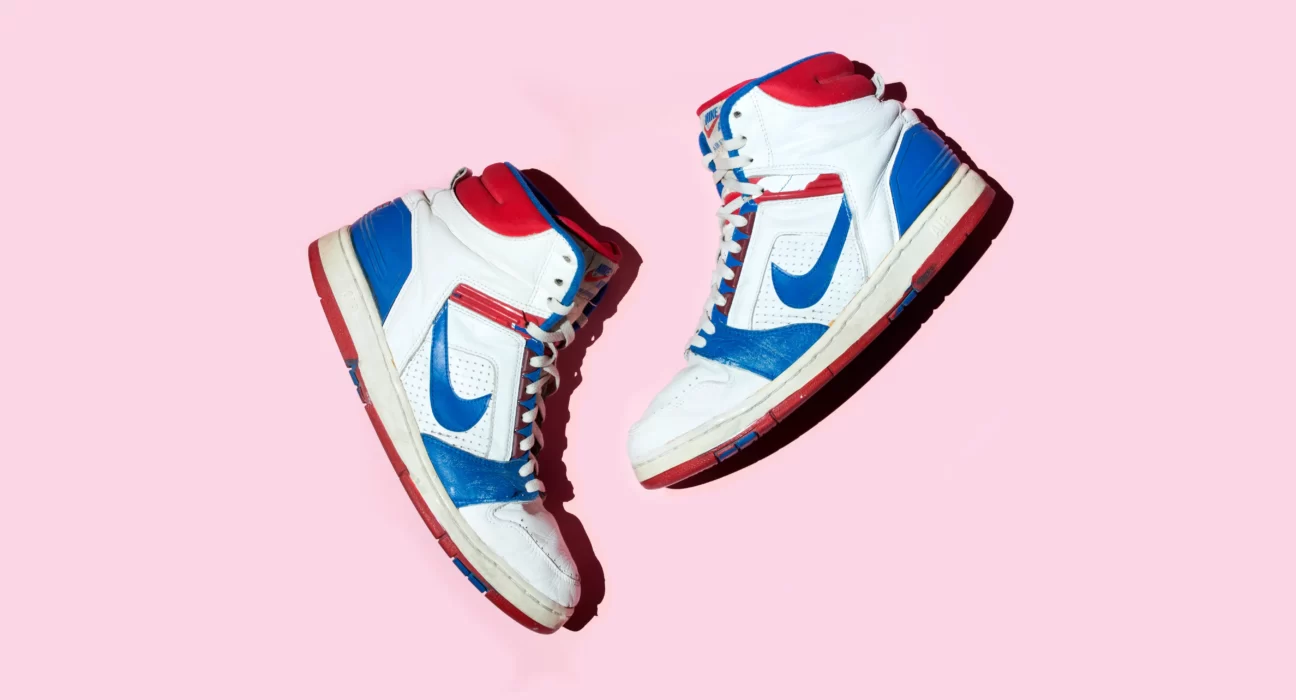Nike must recover after the massive sneaker bubble busts.

Few companies benefited from government largesse during the pandemic era more than Nike Inc. Stuck at home and with little else to spend their trillions of dollars in stimulus money on, consumers couldn’t get enough of what the athletic-gear maker was selling. In 2020, Air Jordan 1 Highs were going for a 61% premium in the resale market. Nike’s share price soared 40% in 2020 and as much as 25.5% in 2021, reaching a record high that November. Just four Wall Street analysts out of more than 30 that covered Nike at the time had recommended investors “hold” its shares, which is often interpreted as an encoded recommendation to sell.
Those heady days are long gone. Nike’s shares have tumbled 37% from their peak. The number of analysts with a ‘hold’ rating on the stock has tripled to 12. In its fiscal 2023 earnings report last week, the company divulged that it’s sitting on $8.5 billion of unsold goods despite a slew of margin-busting promotions, a level some 23% above what it described as healthy inventory levels in 2021. Its outlook for sales in fiscal 2024 fell short of analysts’ estimates. Those Air Jordan 1 Highs? They are now selling in the resale market at a 2% discount. This leads to an uncomfortable question: Is the $152 billion global ‘sneaker bubble’ bursting? The answer, at least for Nike, may be ‘yes’.
“Overall, Nike is a solid brand, and it is not suffering from an existential crisis,” Neil Saunders, an analyst at GlobalData Retail, said in a note to clients. “However, it isn’t on the front foot either, and has to accept that the year ahead will be one of resetting, retrenching, and reformulating the way it does business.”
A weak spot for Nike is its symbiotic relationship with the resale market for sneakers, with resellers quickly snatching up inventory. That created a scarcity factor for the company’s footwear that allowed it to sell what was in stock at a hefty premium. In some ways, it’s not unlike the concert ticket industry.
But with supply chains having normalized and inflation being elevated for two years now, there are signs that consumers are being more discriminating when it comes to spending. On the list of priorities, expensive sneakers are pretty low.
The other issue for Nike is that has been in an innovation slump, not having released a hit sneaker since it introduced the Nike React in 2019. At the same time, independent sneaker brands have risen and luxury apparel companies entered the footwear business. The aesthetically unpleasing Hoka sneakers, acquired by Deckers Outdoors in 2012 for $1.1 million, now brings in about $1.4 billion in annual revenue. While Nike is known for style, Hoka is designed for comfort and performance, and has become a mainstay in the closets of marathoners, casual runners and fans of comfortable shoes. Last year, Hoka overtook Nike, Adidas, New Balance and Converse as the No. 2 top-selling sneaker brand on StockX. The French sportswear company Salomon has the resale site’s top selling shoe.
Nike’s track record with women athletes also leaves it at a disadvantage to capitalize on the growing $63 billion athleisure market in the US. Nike tarnished its reputation among women following scrutiny of the company’s corporate culture and its treatment of pregnant athletes. Several star women athletes such as Olympic gymnast Simone Biles and WNBA player Breanna Stewart have not renewed their contracts with Nike, opting for companies such as Gap Inc’s Athleta, Puma SE and Lululemon Athletica where they have more creative input on the merchandise they sell.
With sneaker sales slowing, Nike’s relatively low ability to connect with women shoppers is a risk. If it wants to survive the changing sportswear landscape, it needs to expand its roster of women athletes and add new signature apparel and footwear designed along with them.
The good thing for Nike is that it seems to recognize its shortcomings. The company announced several executive changes last month in an effort to “deliver breakthrough innovation” that could bring the kind of creativity and newness the brand needs. And just last week, it announced a new women-focused initiative called Nike Well Collective, which will include 1,000 new fitness trainers focused on holistic fitness and a series of new trainings and exercises across its apps. Later this summer, it will launch a signature shoe with New York Liberty All-Star Sabrina Ionescu called the Nike Sabrina 1.
In sports, there’s no greater story than the comeback—like the ageing superstar making a triumphant return. It might be premature to equate Nike with an ageing superstar, but it’s critical for the company to persuade customers and investors that it can regain its glory days.







